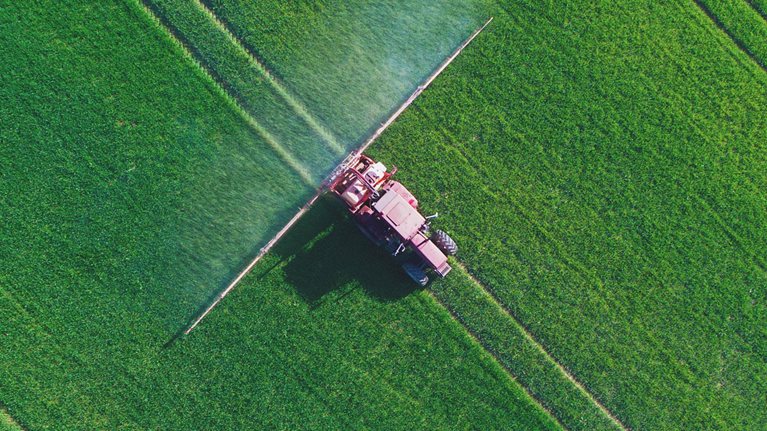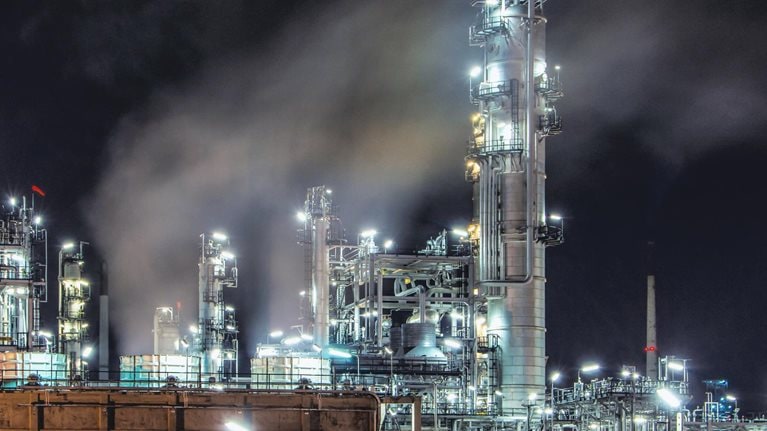COVID-19 is forcing petrochemical executives to rethink the future of the industry. Slowing demand growth, growing surplus, and a shrinking value pool were already present before the pandemic and have only become more pronounced. In addition, the industry faces structural disruption from the transition to renewable energy resources and a regenerative, or circular, economy.
This article details the impact of disruptions due to the pandemic—namely the decline in demand and oil prices—on short-term, medium-term (the second half of 2020 through 2023), and longer-term (after 2023) industry outlooks. Chemical-industry leaders and financial investors alike will need to update their perspectives and management agendas to focus on recovery scenarios, regionalized supply chains, and capital productivity.
An industry snapshot: Growth interrupted
After the financial crisis of 2008, the petrochemical industry saw prolonged, impressive growth from 2010 to 2018, during which the value pool grew by 8 percent per annum. High utilization levels and favorable feedstock dynamics eventually led to a so-called supercycle (a time when petrochemical margins are higher than usual) from 2016 to 2018.
Generally speaking, industry utilization (typically at a product-chain level) determines the marginal producers, and the price of oil determines the steepness of the cost curve in many product chains. With this in mind, the following factors contributed to the petrochemical industry’s performance:
- margin improvement due to tight markets across all regions; utilization rates for ethylene improved from 84 percent in 2008–09 to 90 percent in 2017–18
- continued capacity growth from 62 million tons per annum (MTA) in 2008 to 102 MTA in 2018 based on advantaged feedstock, especially in the Middle East and North America
- strong demand growth from emerging markets, contributing more than 40 percent of growth to the value pool from 2010 to 2018
In 2019, significant capacity additions and slowing demand growth caused the industry value pool to decline. This decline was further accelerated in 2020 by the COVID-19 pandemic. The impact of the coronavirus on petrochemical demand was irregular across value chains, with automotive and construction applications seeing particularly steep declines, and packaging demand (especially in food, sanitary products, and medical applications) remaining robust. Reasons for the latter include stockpiling, a surge in delivery services, and increased healthcare-focused activity—all in response to the pandemic.
Despite a few plants shutting down in select geographies, industry players have coped well with the short-term impact—and are now planning for the medium term.
Short-term impact of COVID-19: Industry response
Varying levels of exposure to end markets and regions mean uneven demand-side impact. Order books for polyethylene players (which make products such as plastic containers for milk, motor oil, and shampoos) remained strong, while players in other value chains, such as polyurethanes (used for flexible and rigid foam panels, seals, and gaskets), saw a decline in demand.
The supply side has been less affected. In fact, many petrochemical assets have weathered the storm remarkably well, and few were affected by supply-chain disruptions. Most companies struck the right balance between physical distancing and keeping plants running to provide necessary ingredients or materials to fight the pandemic. However, several chemical companies adapted their existing plants to produce and meet increased demand for isopropyl alcohol (for disinfectants) and ethanol.
Short-term impact is well reflected in the financial results of several petrochemical players from the first half of 2020. Of the companies analyzed, earnings before interest, taxes, depreciation, and amortization (EBITDA) margins have declined by three percentage points (versus the first half of 2019).1 In response, some industry leaders have cut operating and capital spending.
Although most companies are taking the necessary measures to respond to current economic conditions, focus should generally shift to refreshing medium- to long-term strategies, capital plans, and operating models. This starts with a nuanced understanding of future scenarios and the crucial elements affecting them.
Would you like to learn more about our Chemicals Practice?
Medium- to long-term impact of COVID-19: Roads to recovery
COVID-19 has instigated a decline in both demand and oil prices. The industry was already entering a downcycle in 2019; in fact, the industry value pool fell by approximately 45 percent as a consequence of slowing demand growth and, in particular, strong capacity additions, which ultimately led to low utilization levels and lower oil prices in 2019.
Industry utilization
Petrochemical demand recovery will vary by geography and value chain and depend on epidemiological and macroeconomic impacts. In one of our scenarios for COVID-19, demand could reach pre-COVID-19 levels by the first quarter of 2022 (Exhibit 1). On the supply side, some players have delayed or canceled plans to expand capacity; nonetheless, we anticipate significant overcapacity beyond 2022—possibly even 2025, as it will take time to throttle back capacity addition.

Oil-price evolution
The decline in oil prices has flattened cost curves, particularly in methanol and ethylene, eroding value pools, especially for players with access to advantageous feedstocks (Exhibit 2). While there is considerable uncertainty regarding oil prices, several industry forecasts see a “low for longer” scenario.

Industry players have only a few options to address utilization, including delaying capacity additions and restructuring current capacity. Heading into the crisis, ethylene utilization was expected to be about 85 percent between 2020 and 2025 (versus 89 percent in 2019). Several recent scenarios, however, suggest that utilization levels will likely remain below 85 percent, even with large reductions in capacity.
A scenario of muted recovery shows an average industry utilization of about 81 percent until 2025. In addition, the resulting impact on the value pool shows a decline of around 16 percent and won’t return to 2019 levels until 2023 (Exhibit 3).

In the longer term, ethylene utilization rates may improve in the second half of this decade, though the extent will depend on overall industry conduct. In the event of limited investments, utilization may rebound to 2017–18 levels by 2030, or it could remain below 2019 levels if significant capacity is added (Exhibit 4).

A shifting management agenda
Petrochemical management teams should update their strategic agendas to reflect lessons learned from the first half of 2020, including the following shifts:
- Use scenarios to manage the recovery. Given the unclear global industry outlook—and the possibility of prolonged uncertainty for the next 12 to 18 months—companies should build scenario-based market outlooks. Tailored to specific value chains and geographic footprints, these perspectives can guide strategic and operational decision making by focusing on profitability and cash flow.
- Prepare for increasingly regionalized supply chains. The petrochemical industry was already starting to regionalize following supply-chain globalization driven by advantaged feedstocks. This means that COVID-19 has had limited impact on supply chains for bulk petrochemicals and polymers (apart from select bottlenecks due to lockdowns). However, the pandemic has highlighted demand-side dependencies on global supply chains—as well as potentially adverse effects on pharmaceutical intermediates, N95 masks, and disinfectants. According to a recent McKinsey Global Institute report, up to 35 percent of the chemical industry’s annual EBITDA could be at risk because of supply-chain disruptions.
- Raise capital productivity. With overcapacity and lower operational cash flows looming until 2025, companies should revisit their capital-investment pipelines. In addition, they should focus on improving productivity for well-advanced and under-construction projects, for example, by renegotiating prices or adjusting project-completion times.
- Scale digital and analytics in commercial and operations. End-to-end digital transformations can lead to significant margin improvements for chemical companies. Petrochemical players should double down on maximizing margins by using advanced analytics to reduce procurement costs, lower energy consumption, improve yields and throughput, and optimize product pricing in a dynamic business environment.
- Continue the transition to a circular economy. Low oil prices, lower overall demand, and higher consumer concerns of health and safety amid a pandemic may slow the transition to a circular economy. Further complicating matters, systemic challenges—such as lack of product standardization and inefficient sorting processes—keep recycling rates low in the short and medium terms. However, a recent McKinsey survey found that 87 percent of recyclers expect consumers to continue supporting sustainable or recycled products, regardless of the crisis or an economic downturn. The implication is that recycling and the transition to a circular economy are here to stay.
Petrochemical companies have several challenges to overcome on their road to recovery. Learning from the past few months and making several management shifts based on informed and realistic outlooks could make all the difference in adapting to the next normal and emerging from the crisis stronger than before.

